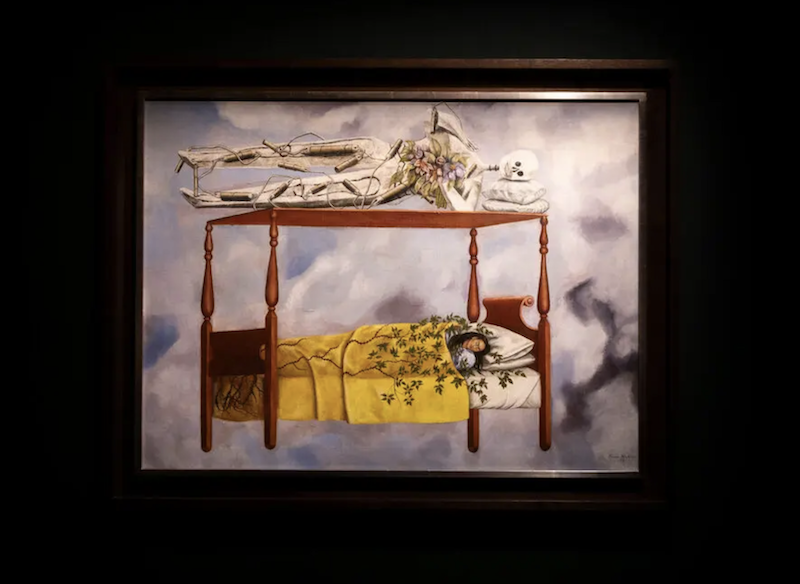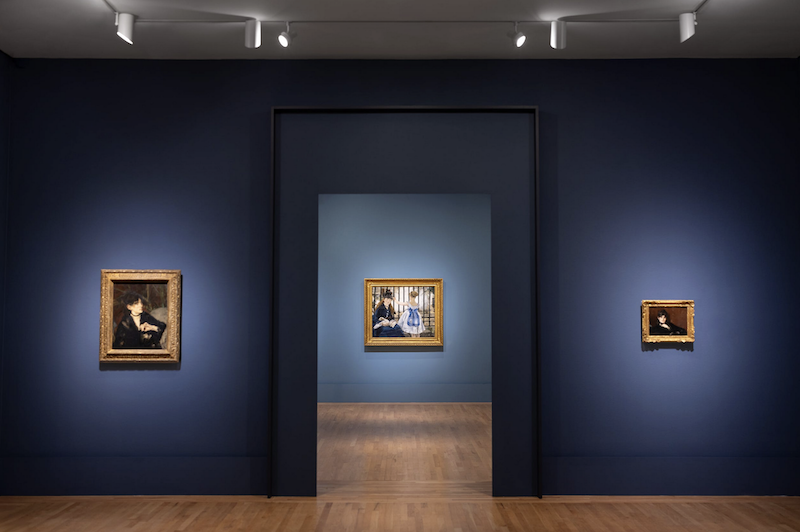J.M.W. Turner (1775–1851) and John Constable (1776–1837) were two of Britain's greatest painters and their most formidable rivals. Born only a year apart—Turner in 1775 and Constable in 1776—their works were likened by contemporary art critics to a clash of fire and water. To commemorate the 250th anniversary of their births, Tate Britain will host a special exhibition, "Turner and Constable," on November 27th, revisiting their artistic collision through vivid narratives and skillful juxtapositions of their works.
Turner grew up in the slums of Georgian London, and despite his humble origins, he quickly became a rising star in the art world. Meanwhile, Constable, the son of a wealthy Suffolk merchant—his father was a grain and coal merchant and farmer—was also determined to forge his own artistic path, but Constable's road to success was long and arduous.

JMW Turner Self-Portrait, 1799

John Constable's self-portrait, 1806
Despite their different backgrounds, both artists shared the same aspiration: to elevate the artistic standard of landscape painting. They vied for success with strikingly different yet equally bold creative approaches. Thus, a fierce competition quickly unfolded in the landscape painting world. Turner depicted magnificent sunsets and breathtaking scenery from his travels, while Constable frequently returned to his favorite locations to create, striving to imbue his depictions of nature with freshness and realism.
To commemorate the 250th anniversary of the birth of Turner and Constable, Tate Britain is hosting a special exhibition, "Turner and Constable," which presents the two artists' paintings and drawings, tells the story of their intertwined life trajectories and artistic legacy, and reveals a rarely seen side of the two artists through some sketchbooks and personal items.

Turner, *Moss-covered Hut and Shed, A Smoking Man and a Lantern*, 1794-1795

Constable, *Stoke-on-Néland*, c. 1810–1811
Impulsive talent and prudent dedication converge in the exhibition. Sublimity and humility meet; grand dreams and tranquil pastoral scenery complement each other; poetic imagination and the unwavering pursuit of truth form a striking contrast. This exhibition will also serve as an important case study for future explorations of the landscape painting tradition.
Turner, a gifted painter who traveled extensively throughout Europe, depicted the peaks and valleys of the Alps, capturing the fiery glow of the landscape. His 1812 work, *The Blizzard: Hannibal and His Army Crossing the Alps*, sweeps across the landscape like a storm, completely engulfing what was once considered the most magnificent subject matter—historical art—within the surrounding scenery. Constable's 1825 work, *The Leaping Horse*, is equally captivating. In this painting depicting a horse leaping over an obstacle from a barge, he distilled his profound understanding that "the scenery of my homeland is best depicted." You can almost feel the rustling of the spring breeze through the poplar leaves and smell the damp scent of mallow, rush, and moss.

Turner, *Bayarwan, Apollo and the Prophet*
This exhibition will not feature Constable's *The Hay Wagon* or Turner's *Rain, Steam and Speed*, nor will it offer the poignant grandeur of the latter's *Battleship Termerell*. To appreciate these works, one must visit other galleries or the National Gallery in London. Therefore, this special exhibition showcases some rarely seen, and even previously unseen, paintings. For example, Turner's *Juliet and Her Nurse* has not been exhibited in Britain since 1836. Constable's magnificent draft of *Waterloo Bridge* has also never been displayed before.

Turner, *The Burning Houses of Parliament*, 1835
Also highly anticipated is Turner's *The Burning Houses of Parliament*, painted in 1835, which has not been exhibited for a long time. Also on display is Constable's *The White Horse*, painted in 1819, one of his most important works of art. He once described *The White Horse* as "a calm depiction of a tranquil, grey summer morning." It is exhibited alongside a series of other enlarged versions of his "six-foot paintings," hung very low to allow viewers to be almost completely immersed upon approaching, thus maximizing its impact.

Constable, *The White Horse*, 1819, Frick Collection.
The exhibition also raised a question: Were the two really that different? In 1832, Turner and Constable publicly competed. It is said that when Turner saw his somber landscape painting, *Hellefortslaus*, hanging side-by-side with Constable's *The Opening Ceremony of Waterloo Bridge*, adorned with bright red spots, he felt overshadowed. In response, Turner added a large patch of red to his canvas, later cleverly shaping it into a buoy. A scene from the 2014 film *Mr. Turner* depicts this moment. Upon seeing it, Constable exclaimed in frustration, "He was here, and he fired a shot!"

Constable, *The Opening Ceremony of Waterloo Bridge*
So, who won this exhibition? Traditionally, Turner's paintings are considered more "poetic" than Constable's "prose." Turner was a true traveler, always seeking out magnificent distant landscapes. He was also an eccentric artist, installing a peephole in his studio to spy on visitors. He had an unusual fondness for chrome yellow in his work. Among the exhibits is "Ancient Italy: Ovid's Expulsion from Rome," a work not shown in London since the 1970s. This piece, both magical and slightly grotesque, seems like a futuristic depiction of beings from another planet.

Turner, *The Decline of the Carthaginian Empire*, 1817
Of course, it would be a grave mistake to think that Constable's work lacks poetry. Nor would it be a misconception to associate his work with the idyllic English landscapes peddled by the National Trust. Constable's art is rugged, sometimes melancholic. In his work "Flatford Mill," he even meaningfully inscribed his signature on the brown area representing earth.
If we look at these two works through the eyes of critics, they see them as opposing natural forces. They compare the "heat" in Turner's "The Palace and Bridges of Caligula" with the dampness in Constable's "Salisbury Cathedral as Seen from the Bishop's Garden," proposing an effect of "water and fire merging."

Turner, *Caligula's Palace and Bridges*, 1831

Constable, Salisbury Cathedral as seen from the Bishop's Garden
The strength of this exhibition lies in its departure from clichés, guiding viewers through the artistic careers of the two artists chronologically. The exhibition opens with their Lake District journey. Viewers are introduced to them first through their portraits and captivating paintings. Subsequently, rich textual and image comparisons reveal their distinct themes, styles, and techniques. Finally, the exhibition presents the works of the two masters. Curator Amy Concannon also breathes new life into this familiar story. Her labeling of the exhibition is delightful.
In his early years, Turner's brushstrokes were bolder and more unrestrained than those of his contemporaries, as he sought to capture the fresh beauty of nature. Constable, in his youth, was content with the status quo, focusing on depicting intricate terrain. But in his later years, Constable often used a palette knife to apply thick layers of paint, resulting in a loose, somber effect, as if reflecting the mud to which people would eventually return. He captured something profound and real that Turner had failed to grasp.

Turner, *Stangate Creek on the Medway*, c. 1823–1824

Constable, The Valley of Dedem, 1828
Compare their later works. What could be a more striking contrast than Turner's somewhat decadent "Norlem Castle," painted in 1845, and Constable's "On the Banks of Storr," created around the same time? Both their works approach abstraction, both showcasing depictions of light. The unconventional Turner depicts steamboats and trains, but Constable is not merely nostalgic; his depictions of canals are products of industrial innovation, and his clouds are explorations of meteorology.

Constable, *Hampstead Moor and Rainbow*, 1836

Constable, "Study on Clouds"

Turner, *Sunrise over the Blue Rigi*, 1842
Constable died in 1837 at the age of 60; Turner died in 1851 at the age of 76. Who was better? Audiences might take the time to discuss it in a café. But artists themselves cannot, and should not, be judged like television contestants.
This exhibition clearly demonstrates that despite their different personalities and artistic trajectories, they were both ambitious, dedicated, and innovative. In their own ways, they elevated the previously overlooked field of landscape painting. In this exhibition, the true winner is landscape painting itself.
The exhibition “Turner and Constable” will run from November 27 to April 12, 2026.


